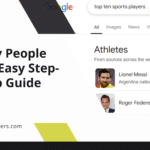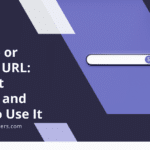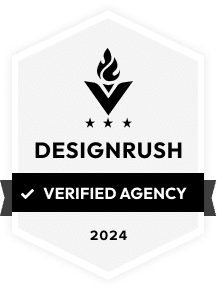
|
Getting your Trinity Audio player ready...
|
A press release is a written communication that is sent to members of the media to announce something newsworthy about a company or organization. It is an essential tool in public relations as it helps to generate media coverage and create awareness about a particular event, product, or service. Press releases are typically used to share information with journalists, bloggers, and other media professionals who can then write articles or stories based on the information provided.
The importance of press releases in public relations cannot be overstated. They serve as a way for companies and organizations to control the narrative and ensure that their message is accurately conveyed to the public. Press releases allow businesses to share important news and updates with the media, which can then be disseminated to a wider audience. They help to build credibility and establish a positive reputation for the company or organization.
The purpose of a press release is to provide journalists with all the necessary information they need to write a story or article about a particular event, product, or service. It should include all the relevant details such as who, what, when, where, why, and how. A well-written press release should be concise, informative, and engaging, capturing the attention of the reader and compelling them to take action.
Key Takeaways
- Press releases are important for businesses to communicate news and updates to the media and public.
- The ideal length of a press release is typically between 300-800 words, but can vary depending on the content and audience.
- Factors to consider when deciding the length of a press release include the complexity of the topic, the target audience, and the desired outcome.
- The attention span of the audience is short, so headlines and subheadings are crucial for grabbing and maintaining their attention.
- Conciseness and clarity are key in a press release, and formatting and structure can impact the length and readability.
The Ideal Length of a Press Release: Understanding the Basics
The average length of a press release is typically between 300-800 words. However, there are several factors that can determine the length of a press release. These factors include the complexity of the news being announced, the target audience, and the desired outcome of the press release.
It is important to keep a press release concise for several reasons. Firstly, journalists are often pressed for time and receive numerous press releases on a daily basis. A lengthy press release may be overlooked or skimmed over if it does not immediately capture their attention. Secondly, readers have short attention spans and are more likely to engage with shorter, more concise content. Lastly, a concise press release allows for easier distribution and sharing on social media platforms.
Factors to Consider While Deciding the Length of a Press Release
- Target audience: The target audience plays a crucial role in determining the length of a press release. If the target audience is industry professionals or journalists, they may be more willing to read longer press releases that provide in-depth information. However, if the target audience is the general public or consumers, it is important to keep the press release shorter and more accessible.
- Type of news: The type of news being announced also affects the length of a press release. If it is a major announcement or event, a longer press release may be necessary to provide all the relevant details. On the other hand, if it is a smaller update or product launch, a shorter press release may be sufficient.
- Level of complexity: The complexity of the news being announced can also impact the length of a press release. If the topic is complex or technical in nature, it may require more explanation and detail, resulting in a longer press release. However, if the topic is straightforward and easy to understand, a shorter press release may be appropriate.
- Call to action: The desired outcome of the press release should also be considered when determining its length. If the goal is to drive traffic to a website or encourage readers to take a specific action, it may be necessary to include additional information or instructions, resulting in a longer press release.
The Attention Span of the Audience: Why it Matters
| Metrics | Data |
|---|---|
| Average attention span of adults | 8 seconds |
| Average attention span of children | 2-3 minutes |
| Percentage of people who multitask while watching TV | 90% |
| Percentage of people who check their phone during a meeting | 70% |
| Percentage of people who forget information within 24 hours | 70% |
| Percentage of people who remember information when presented with visuals | 65% |
Studies have shown that the average attention span of humans has decreased over time. According to research conducted by Microsoft, the average attention span has dropped from 12 seconds in 2000 to just 8 seconds in 2015. This means that when writing a press release, it is crucial to capture the reader’s attention quickly and keep them engaged throughout.
The attention span of the audience directly affects the length of a press release. If a press release is too long or contains unnecessary information, readers are more likely to lose interest and stop reading. It is important to keep the press release concise and to the point, focusing on the most important and relevant information.
To keep the audience engaged, it is important to use clear and concise language, avoid jargon or technical terms, and include compelling and relevant information. Including quotes from key stakeholders or experts can also help to add credibility and interest to the press release.
The Role of Headlines and Subheadings in a Press Release
Headlines and subheadings play a crucial role in capturing the reader’s attention and conveying the main message of a press release. They act as a hook, enticing the reader to continue reading. A well-crafted headline can make or break a press release, as it is often the first thing that readers see.
When writing headlines and subheadings for a press release, it is important to be clear, concise, and compelling. They should accurately summarize the main points of the press release and entice the reader to want to learn more. It is also important to use keywords that are relevant to the topic of the press release, as this can help with search engine optimization (SEO) and increase the chances of the press release being found by journalists or other media professionals.
The length of a press release can be affected by the length of its headlines and subheadings. If the headlines and subheadings are too long, they may take up valuable space and make the press release appear longer than it actually is. It is important to keep them concise while still conveying the main message of the press release.
The Importance of Conciseness and Clarity in a Press Release

Conciseness and clarity are essential when writing a press release. A concise press release is easier to read and understand, and it allows the reader to quickly grasp the main points of the announcement. Clarity ensures that the message is effectively communicated and understood by the reader.
To write a concise and clear press release, it is important to use simple and straightforward language. Avoid using jargon or technical terms that may confuse the reader. Instead, use plain language that is easy to understand. It is also important to organize the information in a logical and coherent manner, using paragraphs and bullet points to break up the text and make it easier to read.
Conciseness and clarity can affect the length of a press release. By being concise and eliminating unnecessary information, the press release can be shorter and more focused. This allows for easier distribution and sharing on social media platforms, as well as increased chances of journalists reading and covering the press release.
The Impact of Formatting and Structure on the Length of a Press Release
Formatting and structure play a crucial role in the readability and length of a press release. A well-formatted press release is easier to read and understand, and it allows the reader to quickly find the information they are looking for.
When formatting a press release, it is important to use headings, subheadings, bullet points, and paragraphs to break up the text and make it more visually appealing. This helps to guide the reader’s eye and makes it easier for them to scan the press release for relevant information.
The structure of a press release can also impact its length. By organizing the information in a logical and coherent manner, unnecessary repetition or duplication can be avoided. This helps to keep the press release concise while still conveying all the necessary information.
The Dos and Don’ts of Writing a Perfect Press Release
When writing a press release, there are several best practices that should be followed to ensure its effectiveness. These include:
Dos:
– Do include all the relevant information such as who, what, when, where, why, and how.
– Do use clear and concise language that is easy to understand.
– Do include quotes from key stakeholders or experts to add credibility and interest.
– Do proofread and edit the press release for grammar and spelling errors.
– Do include contact information for media inquiries.
Don’ts:
– Don’t include unnecessary information or jargon that may confuse the reader.
– Don’t make exaggerated claims or use overly promotional language.
– Don’t forget to include a call to action, such as visiting a website or contacting a representative.
– Don’t neglect to follow up with journalists or media professionals after sending the press release.
Following these dos and don’ts can help to ensure that the press release is well-written, concise, and effective in generating media coverage.
Best Practices for Crafting a Compelling Press Release of the Right Length
To craft a compelling press release of the right length, it is important to follow these best practices:
- Start with a strong headline: The headline should be attention-grabbing and accurately summarize the main message of the press release.
-
Include all the relevant information: The press release should answer all the important questions such as who, what, when, where, why, and how. It should provide enough detail to give journalists a complete understanding of the news being announced.
-
Use quotes: Including quotes from key stakeholders or experts can add credibility and interest to the press release. Quotes should be concise and relevant to the topic.
-
Keep it concise: Avoid unnecessary repetition or duplication of information. Keep the press release focused and to the point.
-
Use bullet points and subheadings: Breaking up the text with bullet points and subheadings makes it easier for readers to scan the press release for relevant information.
-
Proofread and edit: Before sending the press release, make sure to proofread and edit it for grammar and spelling errors. A well-written press release reflects positively on the company or organization.
By following these best practices, it is possible to craft a compelling press release that is of the right length and effectively communicates the desired message.
The Art of Balancing Length and Content in a Press Release
In conclusion, press releases are an important tool in public relations that help to generate media coverage and create awareness about a company or organization. The ideal length of a press release is typically between 300-800 words, but this can vary depending on several factors such as the target audience, type of news, level of complexity, and desired outcome.
The attention span of the audience is an important consideration when determining the length of a press release. By keeping it concise and engaging, it is more likely to capture and maintain the reader’s attention. Headlines and subheadings play a crucial role in capturing the reader’s attention and conveying the main message of the press release.
Conciseness and clarity are essential when writing a press release. By using simple and straightforward language, organizing the information in a logical manner, and eliminating unnecessary information, the press release can be shorter and more focused.
Formatting and structure also play a role in the length of a press release. By using headings, subheadings, bullet points, and paragraphs to break up the text, it is easier for readers to scan the press release for relevant information.
By following best practices and balancing length and content, it is possible to craft a compelling press release that effectively communicates the desired message.
It provides valuable insights and tips on finding the optimal length for your press release to maximize its impact and effectiveness. Whether you’re a seasoned PR professional or just starting out, this article will help you craft press releases that capture attention and deliver your message effectively.
FAQs
What is a press release?
A press release is a written communication that is sent to members of the media to announce something newsworthy about a company or organization.
Why is the length of a press release important?
The length of a press release is important because it can affect whether or not members of the media will read it. If a press release is too long, it may be overwhelming and difficult to read, causing journalists to lose interest.
How long should a press release be?
A press release should typically be between 300 and 800 words. However, the length can vary depending on the complexity of the announcement and the preferences of the media outlet.
What should be included in a press release?
A press release should include a headline, subheadline, dateline, lead paragraph, body paragraphs, and a boilerplate. It should also include contact information for the company or organization.
What should be avoided in a press release?
A press release should avoid using jargon, overly promotional language, and excessive detail. It should also avoid making claims that cannot be backed up with evidence.

























































